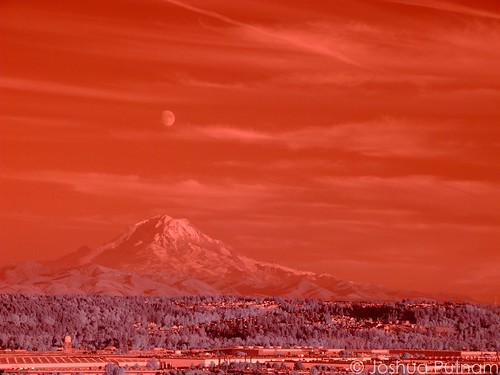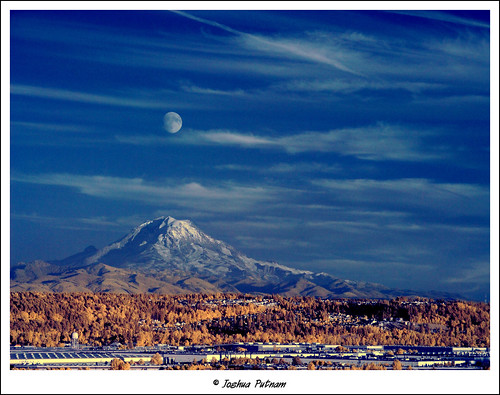False-Color IR Color Mapping
Many photographers who shoot digital color infrared will swap the red and blue color channels in the image.
This produces an image that looks more like what we are used to
seeing with our eyes. For example, this image, taken with a Fuji
IS-1:
becomes
this image:
This is certainly an interesting effect, but it's not purely a coincidence that swapping these channels makes a more natural looking image.
To explain, consider how most digital cameras record infrared: the camera's sensor is masked with filters intended to transmit red, green, and blue bandwidths of light. When we place a dark red filter over the camera lens, green and blue light are blocked entirely, and much red light is blocked as well, leaving deep red and infrared light.
The red-filtered portion of the sensor picks up the visible red and the shorter range of infrared light, while the green- and blue- filtered portions of the sensor detect only the deeper infrared light that can penetrate the green and blue filters. In other words, the usual order of colors is reversed -- the red sensors detect the shortest wavelengths of light, the green and blue record the longest wavelengths. By swapping the red and blue channels in the image, we actually restore the "natural" order of the artificial color rendition.